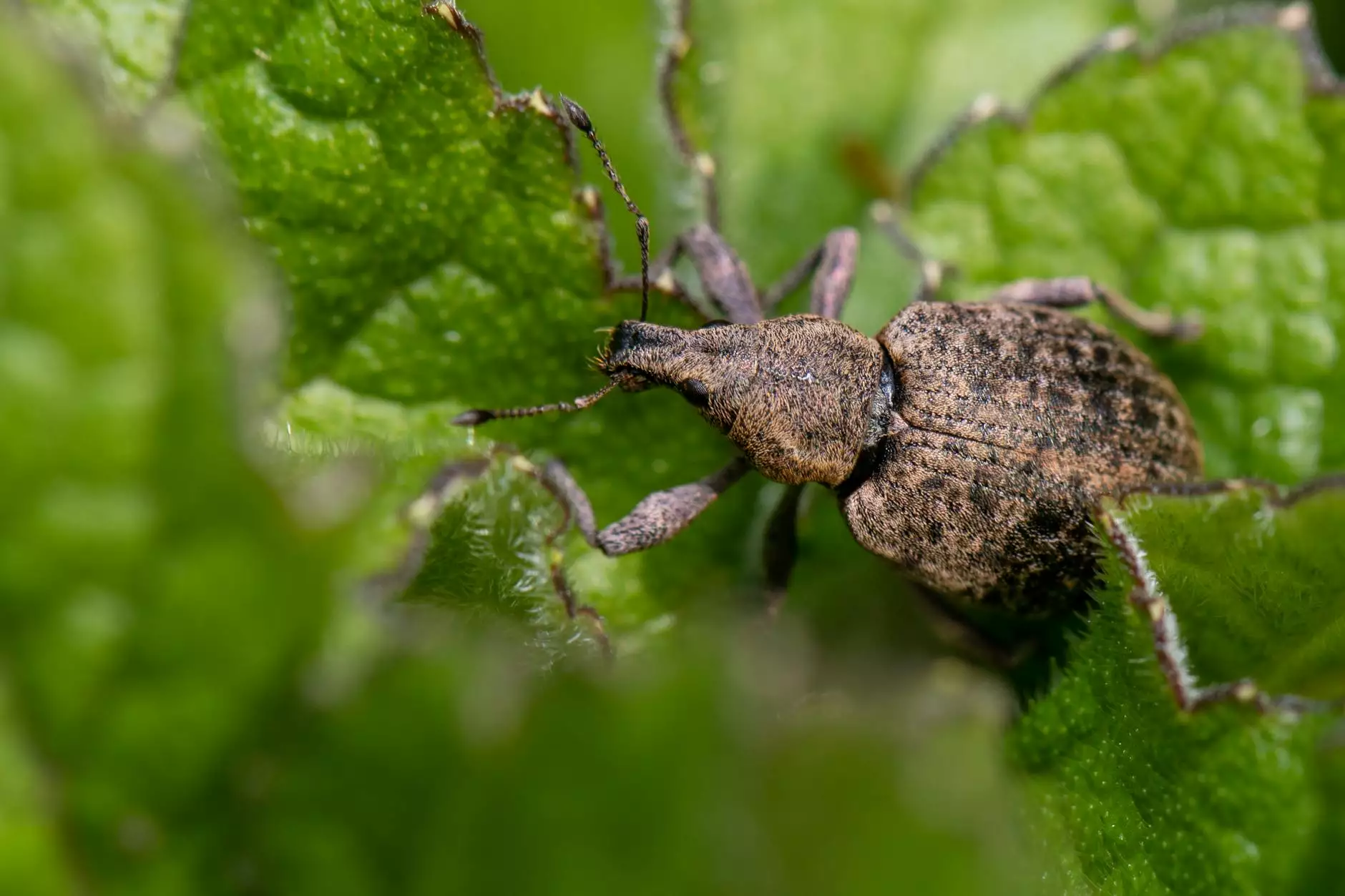Corn Weevil Control: Effective Strategies for Farmers

Understanding Corn Weevils
Corn weevils, known scientifically as Sitophilus zeamais, are one of the most troublesome pests for farmers globally. These pests primarily infest stored corn and grains, leading to significant losses in crop yield and quality. Understanding their lifecycle, behavior, and the damage they cause is crucial for effective control. Adult corn weevils are small, typically measuring about 2.5 to 5 mm in length, with a distinctive elongated snout.
Life Cycle of Corn Weevils
The life cycle of corn weevils consists of several stages:
- Egg Stage: Female weevils lay eggs inside the kernels of corn. Each female can lay up to 400 eggs.
- Larval Stage: Once the eggs hatch, larvae begin to feed on the soft inner parts of the corn kernel, causing significant damage.
- Pupal Stage: After feeding, larvae enter a pupal stage, where they develop into adults.
- Adult Stage: Adults emerge from the kernels, and the cycle begins anew.
Understanding these stages aids in identifying the right corn weevil control methods at different times of the year.
Recognizing the Damage Caused by Corn Weevils
Corn weevils can cause extensive damage to stored grains. Symptoms include:
- Holes in Kernels: Tiny exit holes on the surface of corn kernels are a clear indication of weevil infestation.
- Powdery Residue: The feeding process leaves behind a fine powdery residue known as frass.
- Decreased Grain Quality: Infested grains often experience lowered nutritional value and are unfit for sale.
If left unchecked, corn weevils can devastate a crop, leading to substantial financial losses for farmers.
Preventative Measures for Corn Weevil Control
Implementing preventative measures is vital in your corn weevil control strategy. Here are some critical steps:
- Inspect Grain Before Storage: Always check for infestations in grains before storing them. Only purchase grains from reputable sources.
- Clean Storage Facilities: Regular cleaning of silos and storage areas helps eliminate any potential infestations.
- Maintain Low Humidity: Weevils thrive in high humidity and warm temperatures. Keep storage areas dry and cool.
- Use Airtight Containers: Store grains in sealed containers to limit exposure to pests.
These preventative steps are essential for maintaining the quality of your grains and protecting your investments.
Effective Treatment Options for Corn Weevil Infestations
Sometimes, despite our best efforts, corn weevils still find their way into stores of grain. Here are some effective treatment options for infestations:
- Fumigation: This is a highly effective method where storage facilities are sealed and treated with gas to kill adult weevils and larvae.
- Insecticides: Applying residual insecticides in and around storage areas can significantly reduce weevil populations.
- Heat Treatment: Exposing infested grain to high temperatures can kill all life stages of the weevil.
- Biological Control: Introducing natural predators or biological agents can help manage weevil populations sustainably.
Timely intervention is crucial to limit damage, and farmers should regularly consult with pest control professionals for tailored strategies.
The Role of Farming Equipment in Pest Management
The right farming equipment can make a significant difference in pest management strategies, including corn weevil control.
- Grain Cleaners: Effective grain cleaning equipment can help remove infected grains before storage.
- Seed Treaters: Using seed treatments can protect seeds from the initial stages of weevil infestations.
- Storage Systems: Advanced systems for grain storage can help maintain optimal conditions, limiting pest proliferation.
Investing in quality farming equipment is not just about efficiency; it can also be a powerful tool in pest management and crop protection.
The Financial Impact of Corn Weevil Infestations
Pest infestations, including corn weevils, can have significant financial repercussions for farmers. The cost of inaction can include:
- Loss of Yield: Infestations can lead to drastic reductions in grain quality and quantity, impacting overall yields.
- Increased Management Costs: Dealing with infestations requires time, labor, and often expensive treatments.
- Marketability Issues: Infested grains often cannot be sold, leading to additional losses.
Understanding this impact can motivate farmers to prioritize proactive pest management strategies and invest in effective corn weevil control measures.
The Importance of Record Keeping in Pest Management
Maintaining detailed records of pest activity can greatly enhance the effectiveness of your corn weevil control strategy:
- Pest Monitoring: Keeping track of pest populations helps in timing treatments effectively.
- Cost Analysis: Documenting expenditures on pest control can help evaluate the financial impact and benefits of various strategies.
- Preventative Actions: Historical data can guide future preventative measures and improve overall crop management.
Farmers should invest in digital tools or software to streamline this process and rely on data-driven decisions.
Engaging with Agricultural Experts for Effective Control
Consulting with agricultural experts or pest control specialists can provide invaluable insights into corn weevil control. They can assist with:
- Identification of Infestations: Professionals can help accurately identify pest species and infestations.
- Customized Plans: Experts can develop a tailored pest management plan suited to your specific agricultural needs.
- Ongoing Education: By engaging with specialists, farmers can stay updated on the latest pest control technologies and techniques.
Collaboration with experts not only enhances pest management strategies but also fosters a community of informed farmers.
Conclusion
Proper corn weevil control is essential for farmers looking to protect their crops and maintain profitability. Understanding the biology of corn weevils, implementing effective prevention strategies, and utilizing the right equipment are all critical components of successful pest management. By engaging with experts, maintaining comprehensive records, and being proactive in treatment, farmers can mitigate the impact of these pests and ensure their crops remain safe from infestations.
In the growing world of agriculture, being well-informed and equipped with the right tools can make all the difference. Explore new technologies, stay educated, and ensure that your agricultural practices reflect the highest standards in farm equipment repair and pest management.









